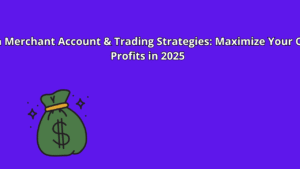Let’s break this down in a way that’s simple, realistic, and beginner-friendly — without the “get rich quick” hype you might see online.
1️⃣ Understand What Trading Is
Trading means buying and selling assets (like stocks, forex currencies, cryptocurrencies, or commodities) to profit from price changes.
You make money if you buy low and sell high — or in some markets, sell high and buy low (short selling).
2️⃣ Choose Your Market
Different markets have different risks, learning curves, and starting costs:
| Market | Pros | Cons |
|---|---|---|
| Stocks | Highly regulated, many learning resources | Requires larger capital for big returns |
| Forex | Open 24/5, low starting capital possible | High leverage risk |
| Crypto | Open 24/7, easy to start | Very volatile, scams are common |
| Commodities | Tangible value (gold, oil, etc.) | Price driven by global events, can be unpredictable |
3️⃣ Learn the Basics Before Using Real Money
A few key concepts you need:
- Pips / Points – The smallest price movement (forex/stocks)
- Leverage – Borrowed funds to trade bigger positions (high risk)
- Stop Loss – A safety order to limit your loss
- Take Profit – An order to close your trade at a target gain
- Trend – The general direction of the market
💡 Tip: Open a free demo account with a broker (like TradingView, MetaTrader, or eToro) to practice without risking money.
4️⃣ Create a Simple Trading Plan
For beginners, a plan should include:
- Your capital (only risk money you can lose)
- Your strategy (e.g., buy when price breaks above resistance)
- Your risk per trade (usually 1–2% of your total account)
- Your daily/weekly trading times
Example:
“I will trade EUR/USD in forex, using a moving average crossover strategy, risking 1% per trade, maximum 3 trades per day.”
5️⃣ Start Small & Use Risk Management
- Never risk your whole account on one trade.
- Avoid overtrading (too many trades in one day).
- Use stop loss orders to protect yourself.
- Keep a trading journal to track mistakes and wins.
6️⃣ Grow With Knowledge, Not Leverage
- Study technical analysis (price charts, candlestick patterns).
- Learn fundamental analysis (news, earnings, economic data).
- Join trading communities, but verify advice.
7️⃣ Realistic Income Expectations
Beginner traders often lose money at first. Aim to:
- Not lose capital in your first months.
- Break even after gaining skill.
- Slowly grow profits by compounding gains over time.
⚠️ Warning: If someone promises “guaranteed daily profit” from trading, it’s a scam.
✅ Bottom line: Start with a demo account, learn one market, stick to a simple strategy, control your risk, and think long-term.



